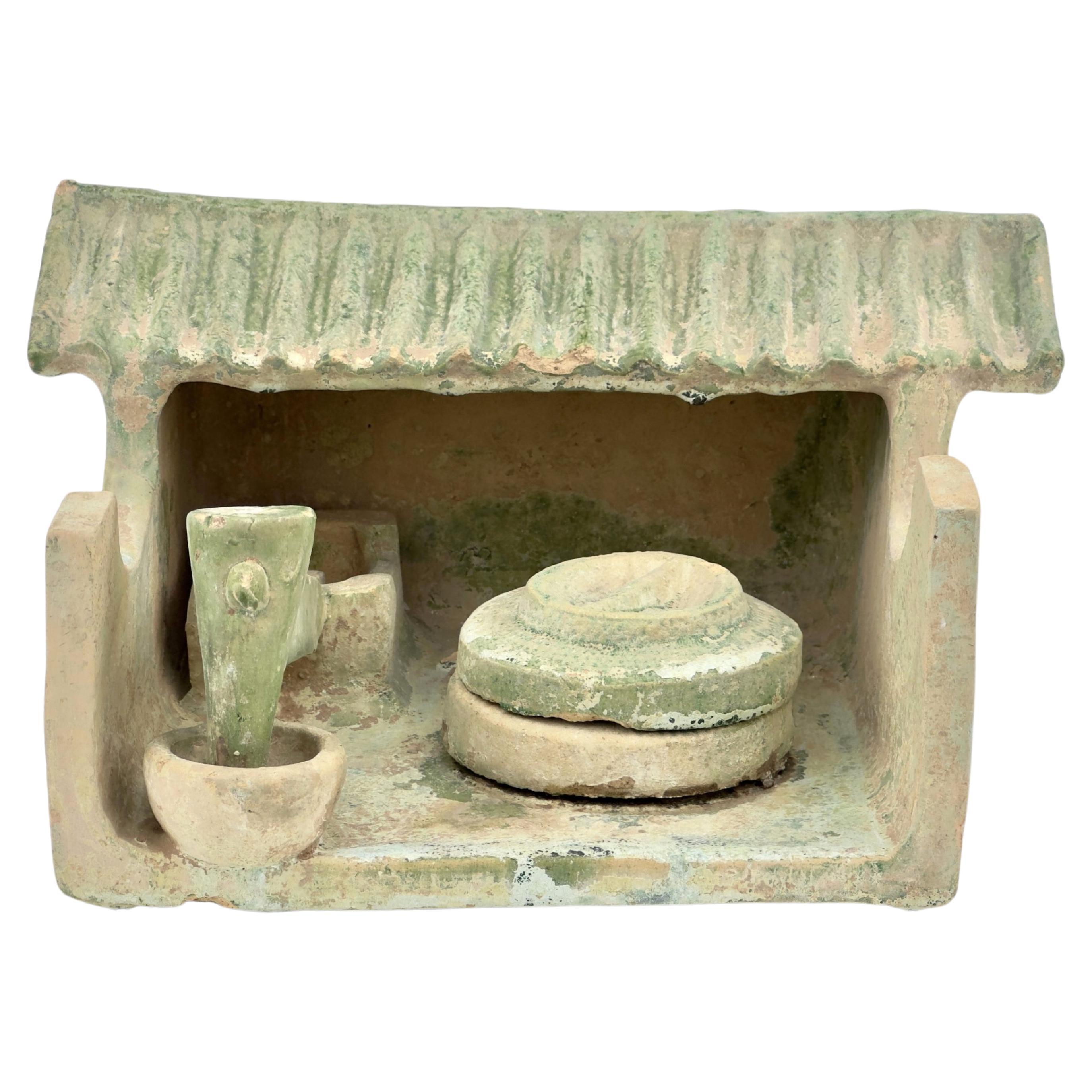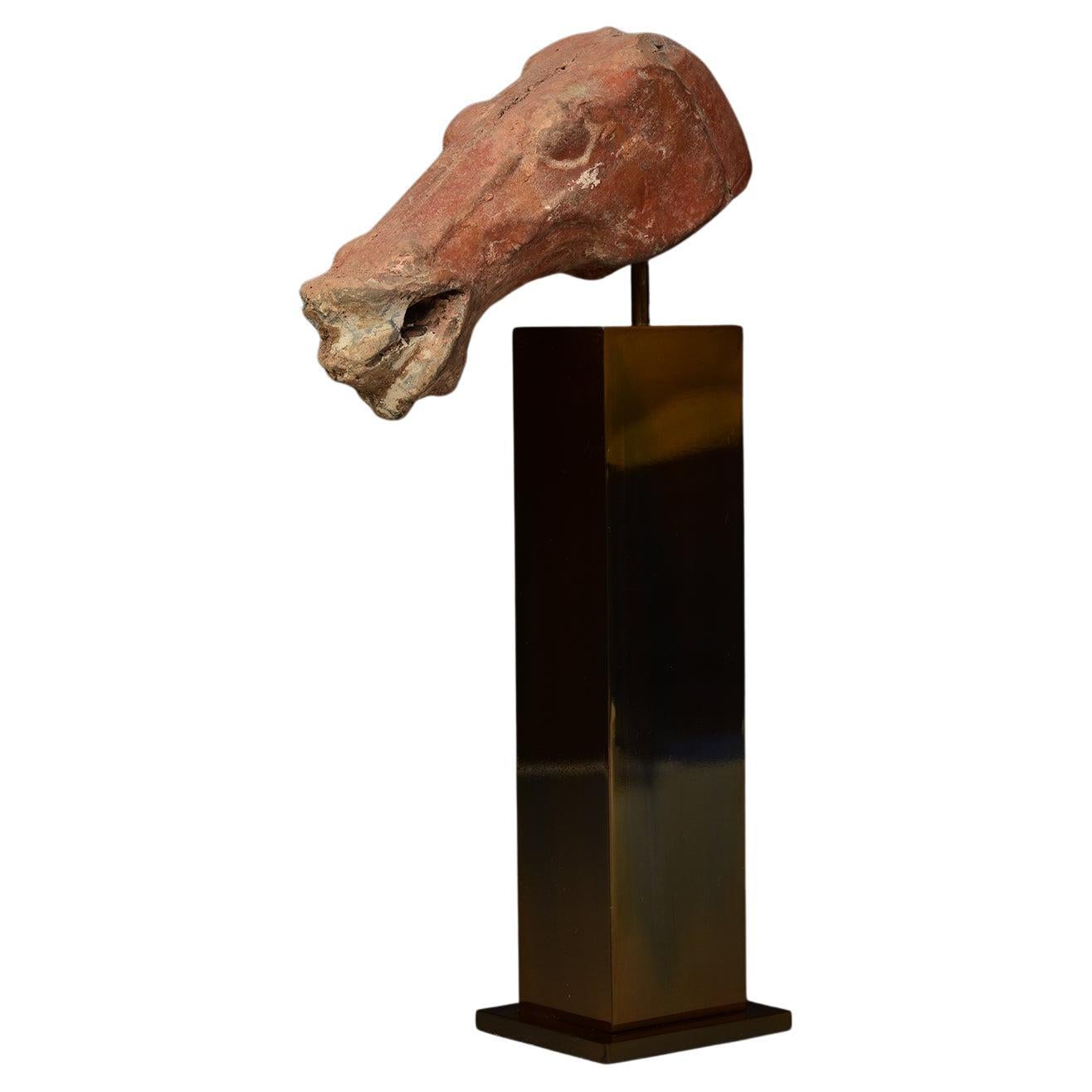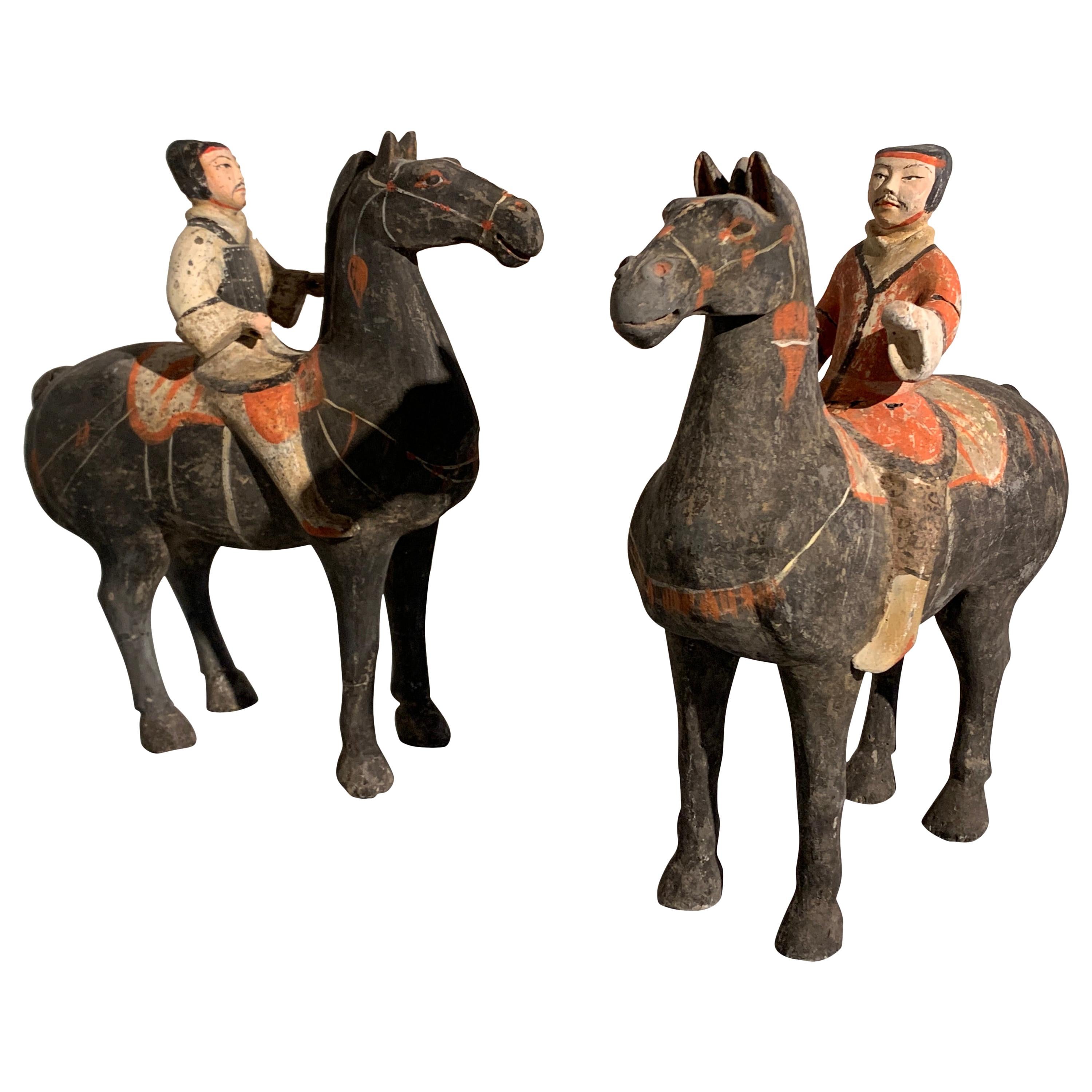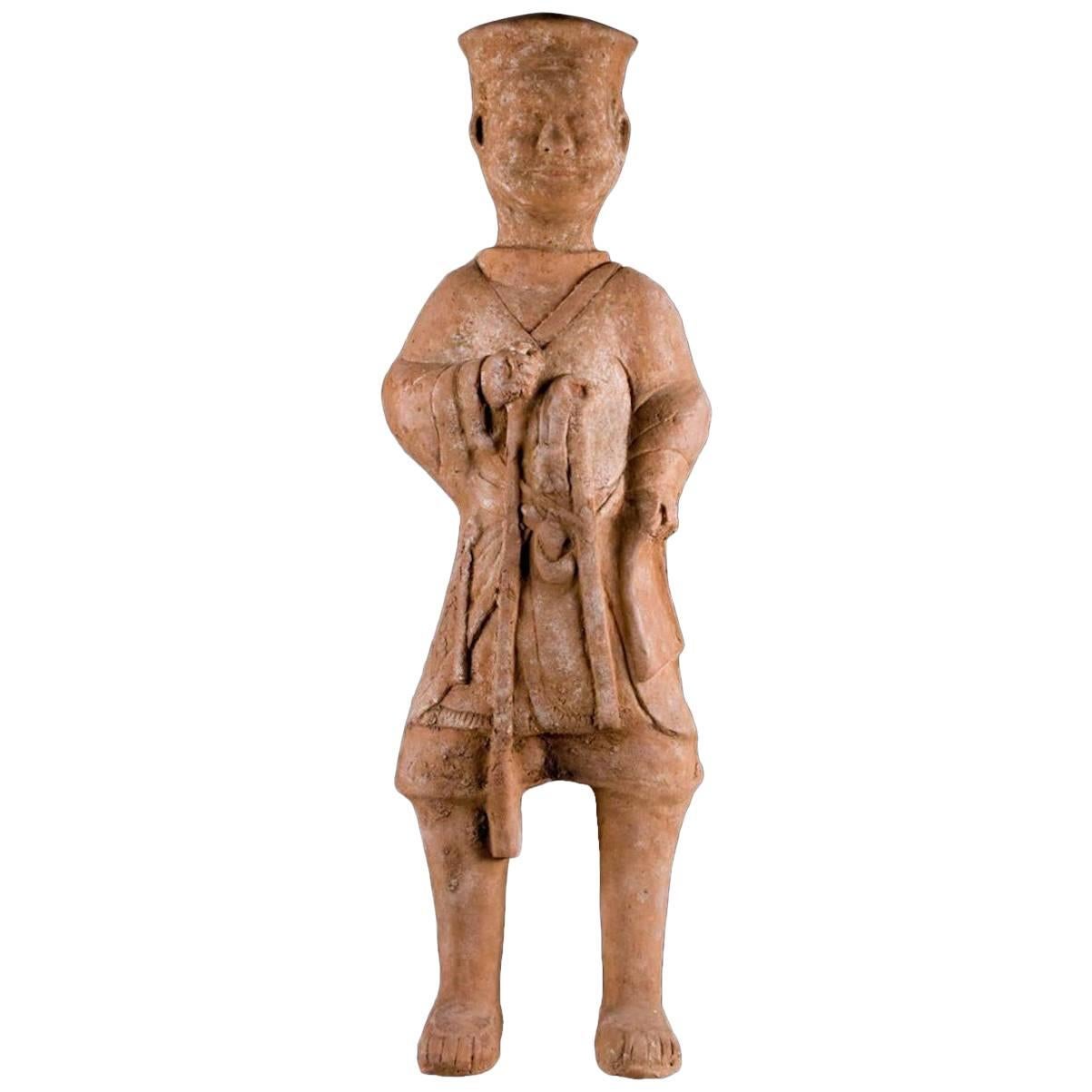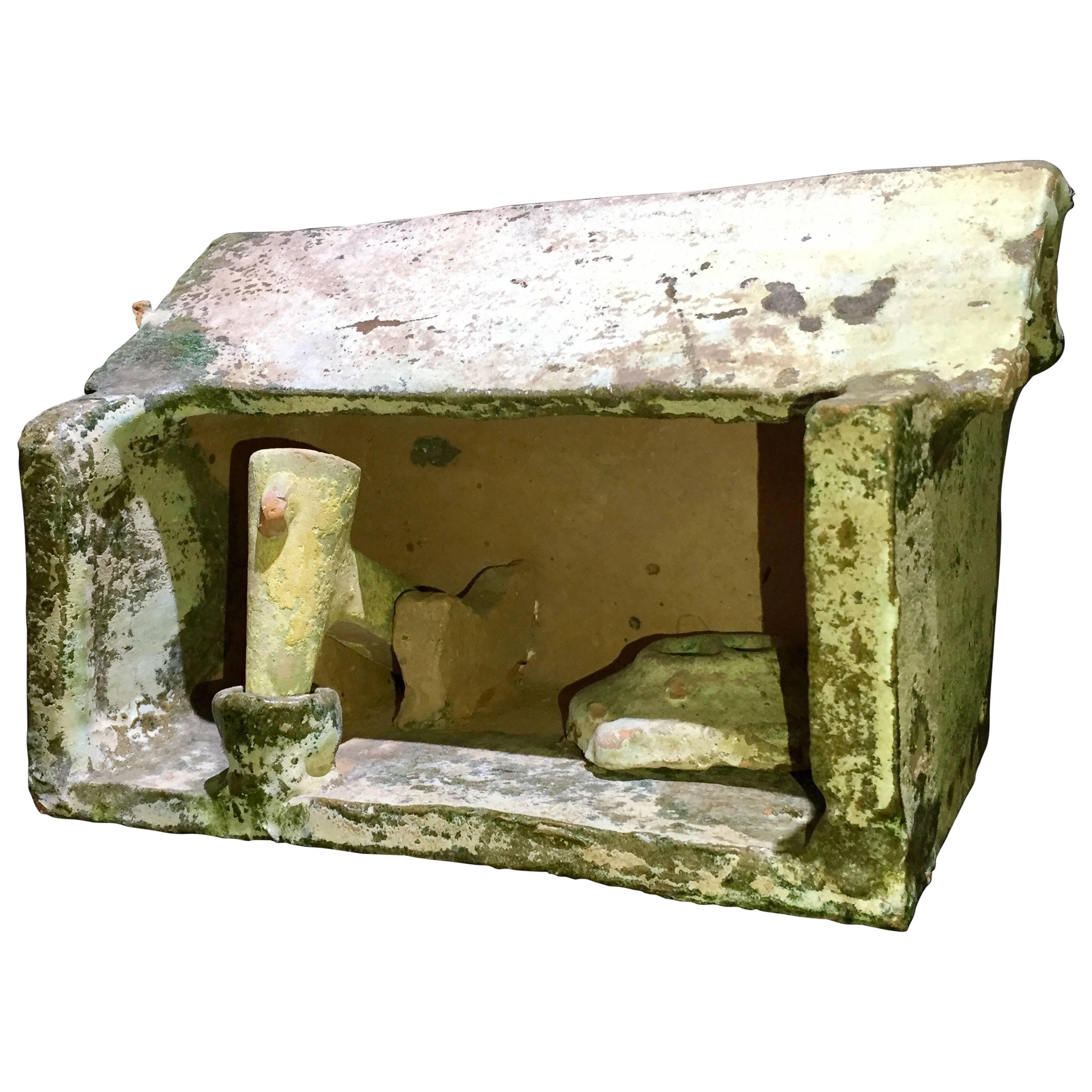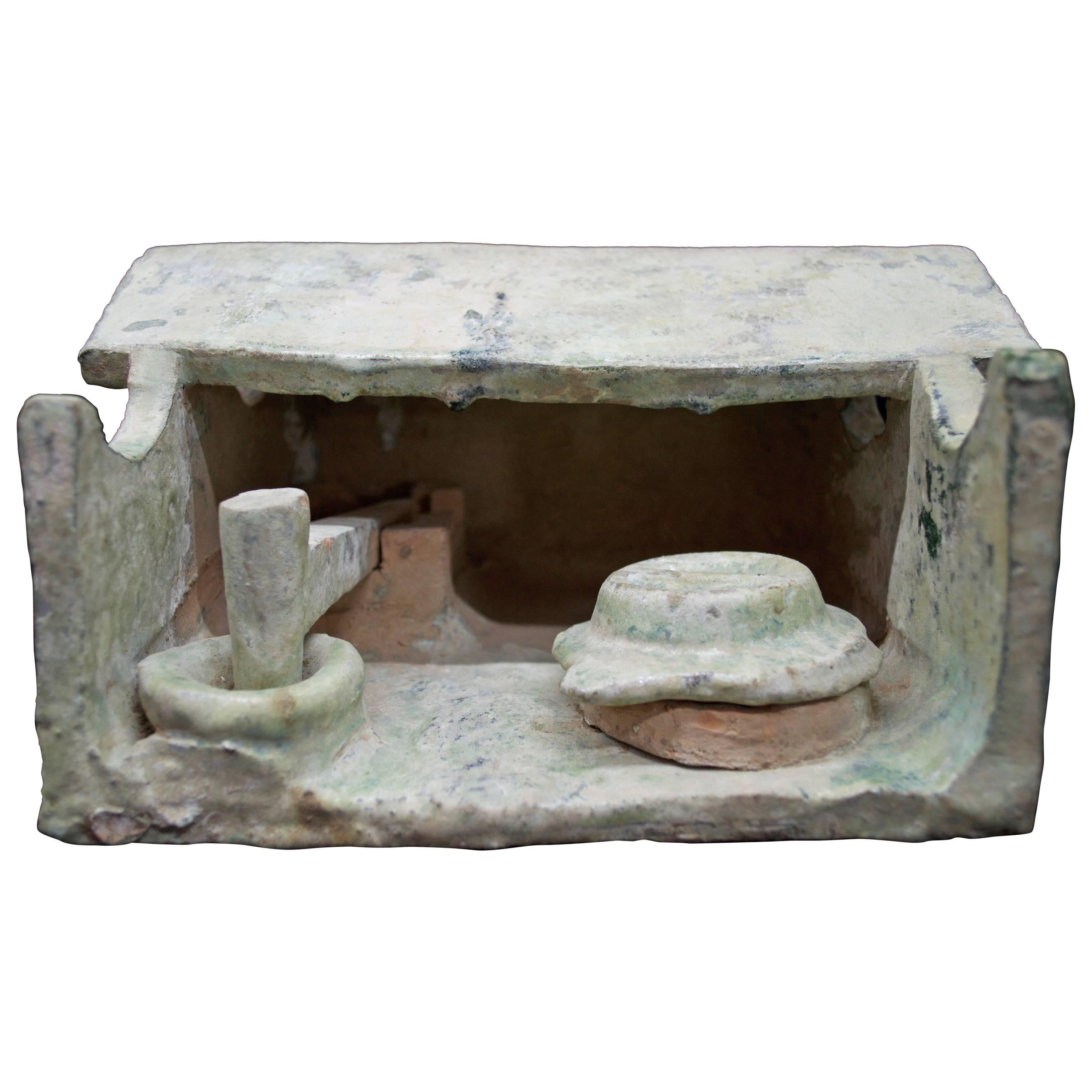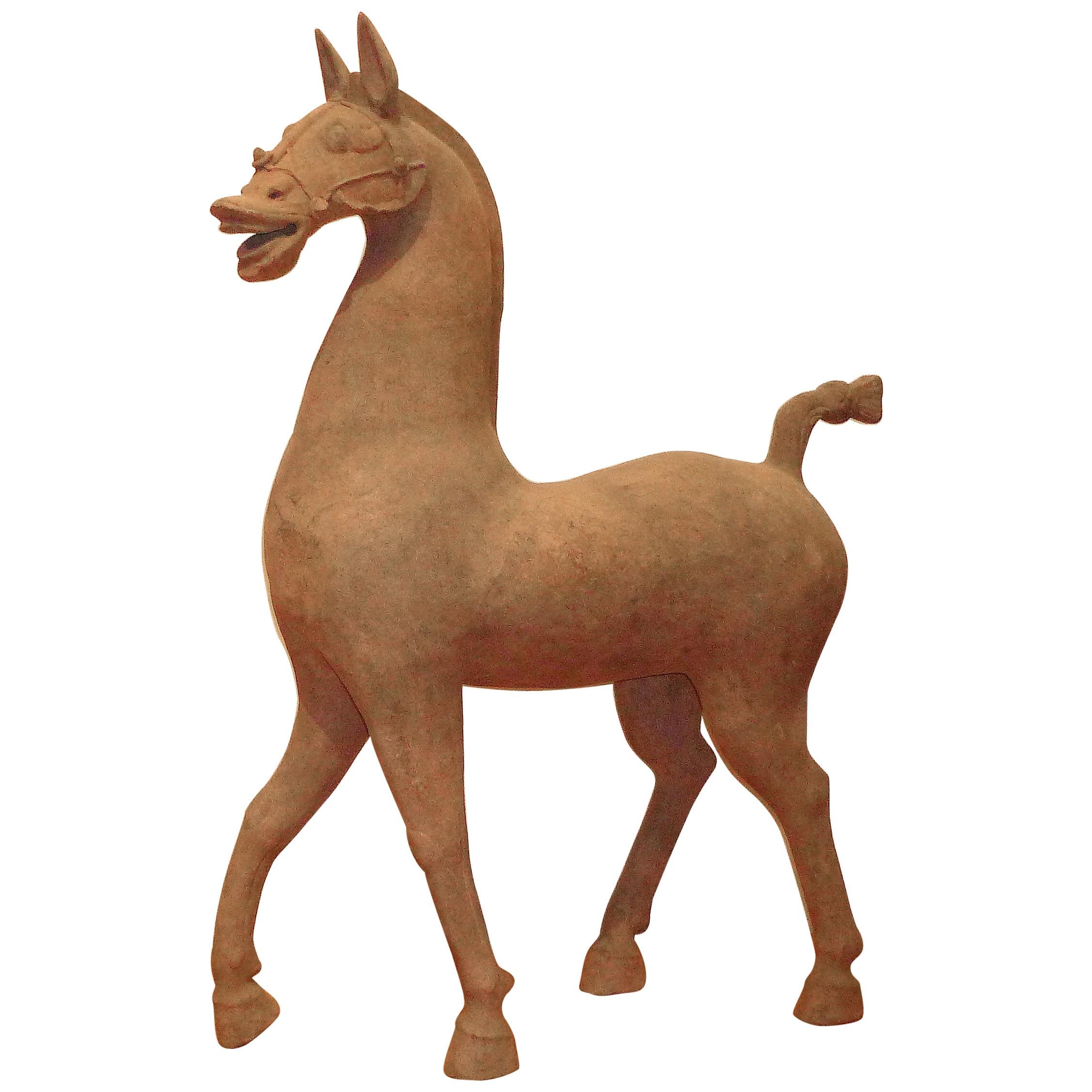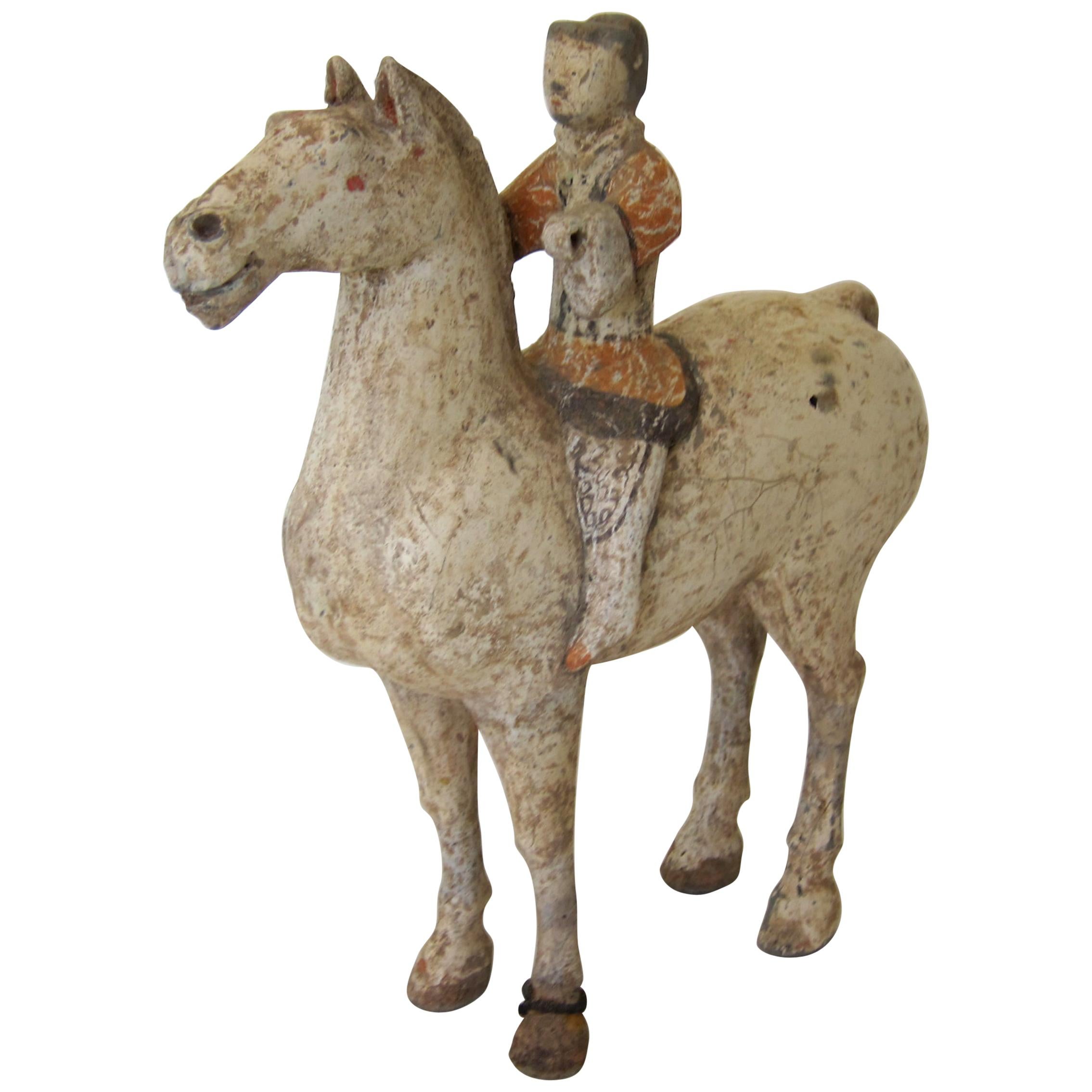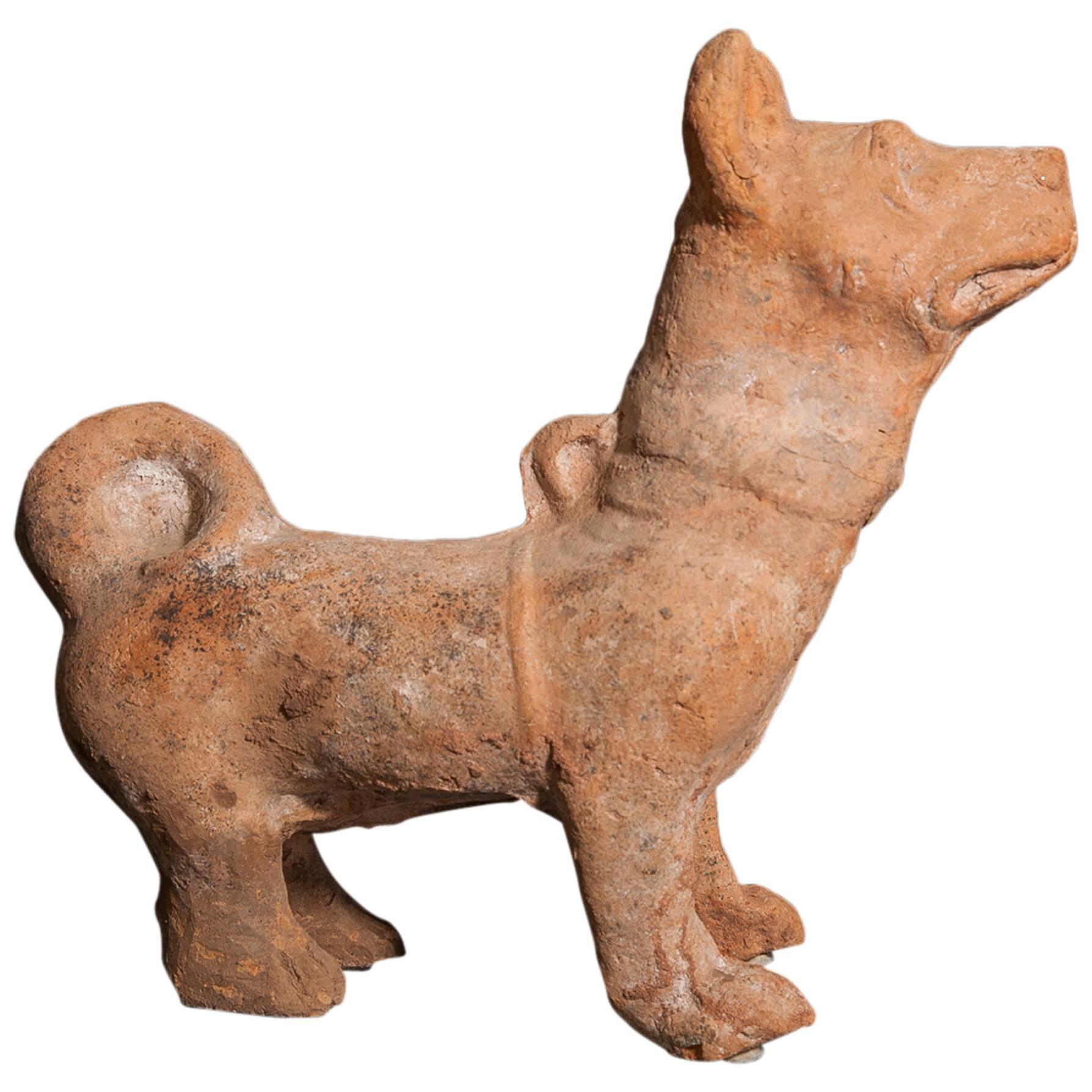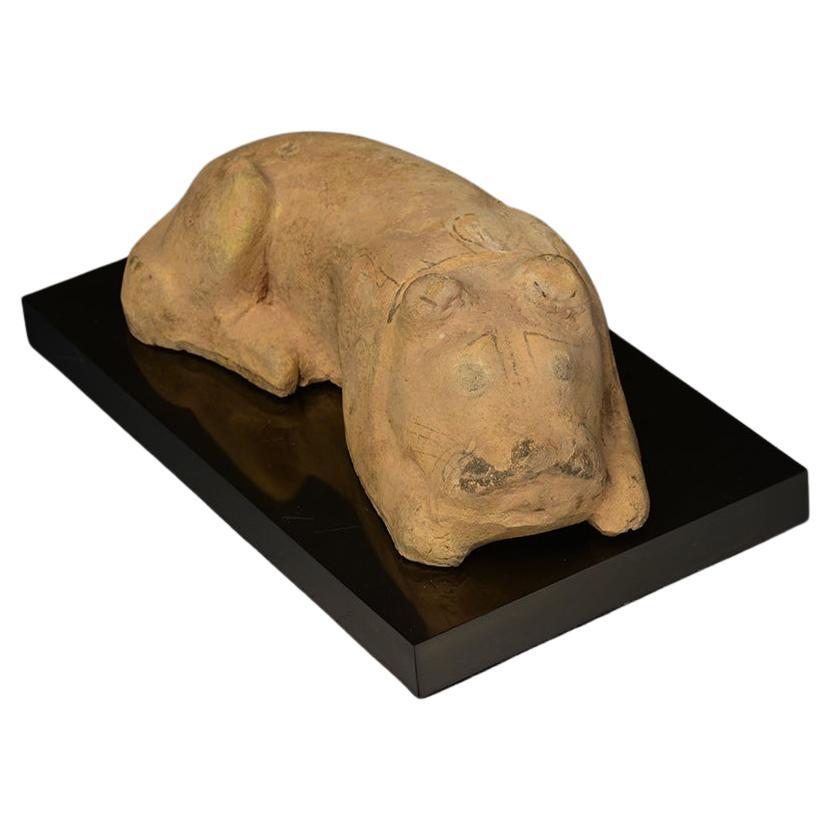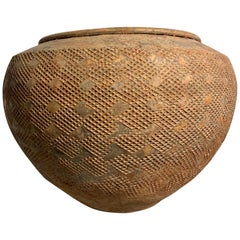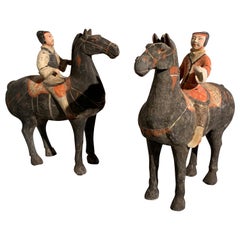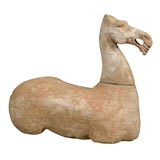
Han Horse from the Han Dynasty in Eastern China
View Similar Items
1 of 10
Han Horse from the Han Dynasty in Eastern China
About the Item
- Dimensions:Height: 18 in (45.72 cm)Width: 22 in (55.88 cm)
- Place of Origin:
- Period:
- Date of Manufacture:206 BC - 220 AD
- Condition:Excellent.
- Seller Location:Atlanta, GA
- Reference Number:1stDibs: 08091985268
You May Also Like
- Han Dynasty, Antique Chinese Pottery Horse HeadLocated in Sampantawong, THChinese pottery horse head with original red and some white pigments remaining. Age: China, Han Dynasty, 206 B.C.- A.D.220 Size: Height 5.5 C.M. /...Category
Antique 15th Century and Earlier Chinese Antiquities
MaterialsPottery
$760 Sale Price20% Off - Massive Chinese Eastern Han Dynasty Impressed Pottery Jar '25-220 AD'Located in Austin, TXA stunning and massive Chinese high fired gray pottery jar of remarkable size and girth, with impressed geometric design, Eastern Han Dynasty (25-220 AD), ...Category
Antique 15th Century and Earlier Chinese Han Antiquities
MaterialsPottery
- Pair of Chinese Painted Pottery Han Dynasty Horse and RidersLocated in Austin, TXA pair of Han Dynasty (206 BC-220 AD) painted pottery horse and riders, China. The horses modeled standing foursquare, supporting their eque...Category
Antique 15th Century and Earlier Chinese Han Sculptures and Carvings
MaterialsPottery
- Eastern Han Dynasty Terracotta Model of a Paper Mill , China '206BC - 220AD'Located in San Pedro Garza Garcia, Nuevo LeonSlab pottery constructed Model of a Paper Mill, in Green and Cream Color Glazed Terracotta having a peaked roof – open walled form with a mechanical pounder and a large round storage container. Light blue-green mottled glazed surface with some iridescence patina to the glaze. The Iridescence is a refraction of the layers on the glass that produces multicolor hues & metallic luster, and only develops after one thousand years of being buried in the ground. An unquestionable mark of antiquity, impossible to falsify. Han Dynasty, dated 206 B.C-220 A.D. Condition: Excellent, wear commensurate with age, an unusual example. This fantastic piece is accompanied by a Certificate of Authenticity. Sculptural effigies of domesticated animals were often interred in the tombs of nobility and elite members of the social hierarchy. Models like this one were made to represent everything from simple goat or pig pens to the most elaborate towers and palaces. Because very few ancient Chinese buildings have survived intact, these models, along with descriptions from ancient texts, give a good representation of what the buildings might have looked like. Burial figurines of graceful dancers, mystical beasts, and everyday objects reveal both how people in early China approached death and how they lived. Since people viewed the afterlife as an extension of worldly life, these figurines, called mingqi, sometimes referred as “spirit utensils” or “vessels of ghosts” disclose details of routine existence and provide insights into belief systems over a thousand-year period. For the first time in Chinese history, we have images of rural and daily life during the Han in the form of contemporary records...Category
Antique 15th Century and Earlier Chinese Han Antiquities
MaterialsTerracotta
- Eastern Han Dynasty Terracotta Barn Workshop, China '206BC - 220AD' Ex-MuseumLocated in San Pedro Garza Garcia, Nuevo LeonSlab pottery constructed barn workshop having a peaked roof – open walled form with a mechanical pounder and a large round covered storage container. Light blue-green mottled glazed surface with some iridescence patina to the glaze. Condition: Intact, excellent condition, an unusual example. Provenance: The Living Torah Museum, Brooklyn; ex. Sands of Time, 2002. Sculptural effigies of domesticated animals were often interred in the tombs of nobility and elite members of the social hierarchy. Models like this one were made to represent everything from simple goat or pig pens to the most elaborate towers and palaces. Because very few ancient Chinese buildings have survived intact, these models, along with descriptions from ancient texts, give a good representation of what the buildings might have looked like. This fantastic piece is accompanied by a Certificate of Authenticity. Burial figurines of graceful dancers, mystical beasts, and everyday objects reveal both how people in early China approached death and how they lived. Since people viewed the afterlife as an extension of worldly life, these figurines, called mingqi, sometimes referred as “spirit utensils” or “vessels of ghosts” disclose details of routine existence and provide insights into belief systems over a thousand-year period. For the first time in Chinese history, we have images of rural and daily life during the Han in the form of contemporary...Category
Antique 15th Century and Earlier Chinese Han Antiquities
MaterialsTerracotta
- Han Dynasty Standing Horse Trainer “Palafrenieri”Located in San Pedro Garza Garcia, Nuevo LeonHuge hollow molded terracotta, standing male figure wearing a hip-length multi-layered robe with a collared neck. Implements suspended from his waist, holding a staff in his right ha...Category
Antique 15th Century and Earlier Han Antiquities
MaterialsTerracotta
Recently Viewed
View AllMore Ways To Browse
Han Horse
Chinese Painted Trunk
Chinese Han Horse
Painted Wooden Trunk
Han Dynasty Horse
Han Dynasty Ceramics
Chinese Wooden Horses
Horse Trunk
Wooden Horse 18th
Antique Chinese Wooden Horse
Horse Han Head
Antique Chinese Wooden Trunk
White Handmade Ceramics And Pottery
Rose Famille Plate
Antique Imari Chargers
Imari Charger Antique
Antique Imari Charger
Antique Blue And White Chinese Export Porcelain
